Extensive remains unearthed near the ancient Templo Mayor, in Mexico's capital, could point to an Aztec royal tomb.
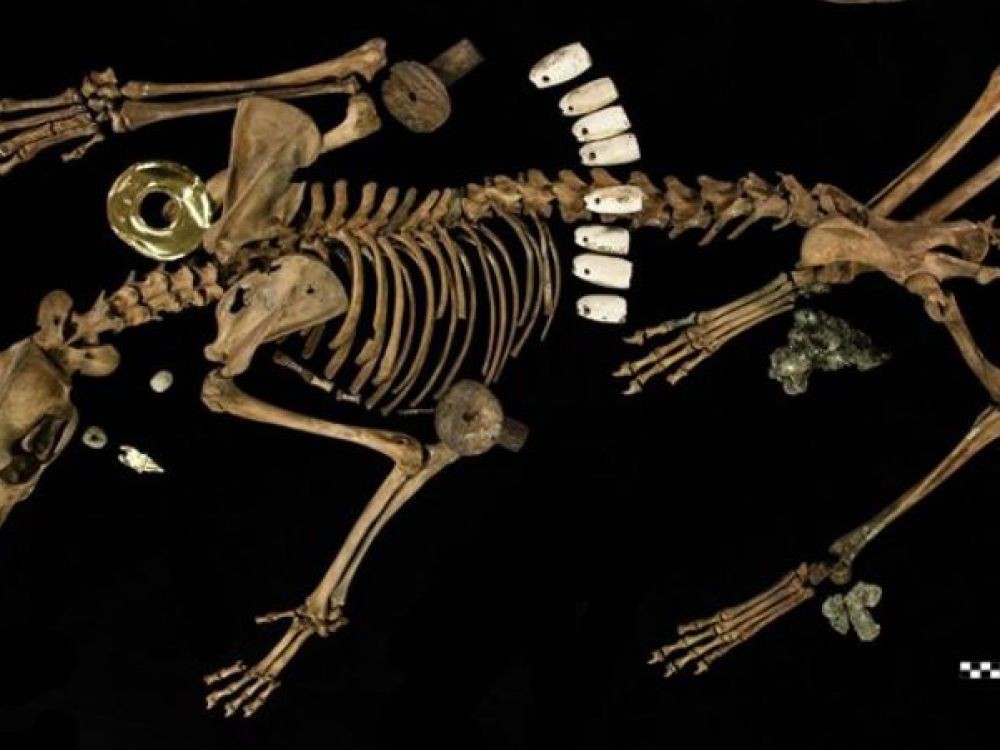
Like this canine, the remains of a jaguar currently being extricated are part of a very valuable Aztec offering found near the Templo Mayor, in Mexico City (Mexico).
Are we heading towards the discovery of the burial of an Aztec emperor? This is the question currently on the minds of archaeologists working in the area of the Templo Mayor, the largest ceremonial center of the Mexica civilization (another name for the Aztecs) located in the heart of Mexico City (Mexico), after the discovery a few days ago, impressive sacrificial offerings.
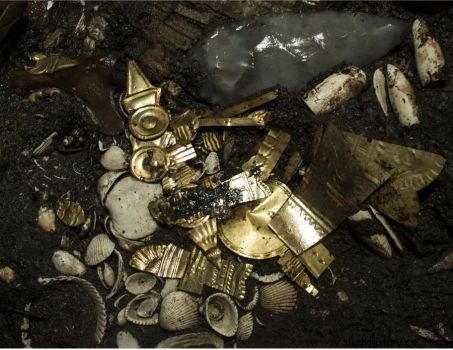
Example of offerings discovered near the Templo Mayor, in the former capital of the Mexica (another name for the Aztecs). ©Mirsa Islas / Proyecto Templo Mayor.
These treasures slept in a box with stone walls dated to the years 1321-1521, brought to light by a team from the National Institute of Anthropology and History (Inah) in Mexico City, led by Leonardo Lopez Lujan, also director of the Proyecto Templo Mayor (PTM). Among them, the exceptional remains of a jaguar dressed in warrior attributes, not far from the remains of an 8-year-old child, found in July 2018, bearing the emblems of Huizilopochtli , the god of war, the sun and human sacrifices…
Are we heading towards the discovery of the burial of an Aztec emperor? This is the question currently on the minds of archaeologists working in the area of the Templo Mayor, the largest ceremonial center of the Mexica civilization (another name for the Aztecs) located in the heart of Mexico City (Mexico), after the discovery a few days ago, impressive sacrificial offerings.

Example of offerings discovered near the Templo Mayor, in the former capital of the Mexica (another name for the Aztecs). ©Mirsa Islas / Proyecto Templo Mayor.
These treasures slept in a box with stone walls dated to the years 1321-1521, brought to light by a team from the National Institute of Anthropology and History (Inah) in Mexico City, led by Leonardo Lopez Lujan, also director of the Proyecto Templo Mayor (PTM). Among them, the exceptional remains of a jaguar dressed in warrior attributes, not far from the remains of an 8-year-old child, found in July 2018, bearing the emblems of Huizilopochtli , the god of war, the sun and human sacrifices…
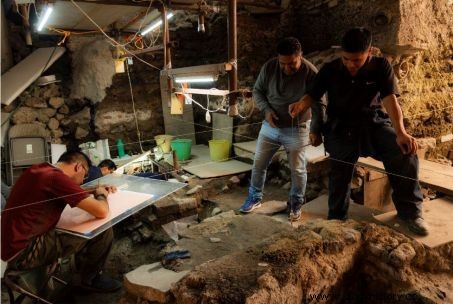
"Offering 179" being cleared. ©Mirsa Islas / Proyecto Templo Mayor
This chest, a true ark -baptized "offering 179 ”-, also contained precious shells, coral, starfish still colored, flint knives decorated with mother-of-pearl and bars of copal, a resin used as incense in ceremonies. Already in April 2017, the body of a wolf covered with silverware was found in this same area, lying on a layer of flint knives. Just like huge swordfish rostra, crocodiles or even ibises. So many offerings that the Mexica priests had placed in a very precise arrangement to symbolize a miniature representation of the universe, superimposing an aquatic, terrestrial and celestial world.
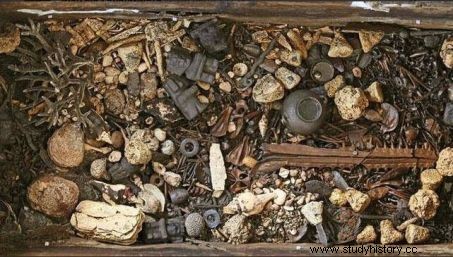
Contents of an offering chest, discovered near the Templo Mayor, the most important sanctuary of the Aztecs, in the heart of their capital Tenochtitlan. ©Mirsa Islas / Proyecto Templo Mayor
This is not the first time that such offerings have been unearthed near the Templo Mayor in the ancient capital Tenochtitlan. True center of the Aztec world, the top of this stepped pyramid was crowned by two sanctuaries:the northern one, dedicated to Tlaloc, the god of rain, and the southern one, dedicated to the terrifying Huizilopochtli. It is also in this same archaeological enclosure that were found, from 2015, impressive Huey Tzompantli, macabre "racks" with skulls, and towers where hundreds of heads of men, women and children sacrificed! Something to dream of researchers who have never yet found the tombs of an Aztec emperor.
Why this rich deposit calls out
After the Spanish conquest (1521), the chroniclers had mentioned the existence of the burials of three Aztec tlatoanis (emperors) -Tizoc, Axayacatl and Ahuitzotl (probably the most powerful) -, whose cremated remains would have been deposited at the foot of the Templo Mayor, and a circular construction called Cuauhxicalco near which the current research is carried out. Could the recovered jaguar represent one of these ancient dignitaries? "These offerings are indeed on the axis of the ancient sanctuary of the god Huizolopchtli" , explains Leonardo Lopez Lujan, joined by Sciences et Avenir.
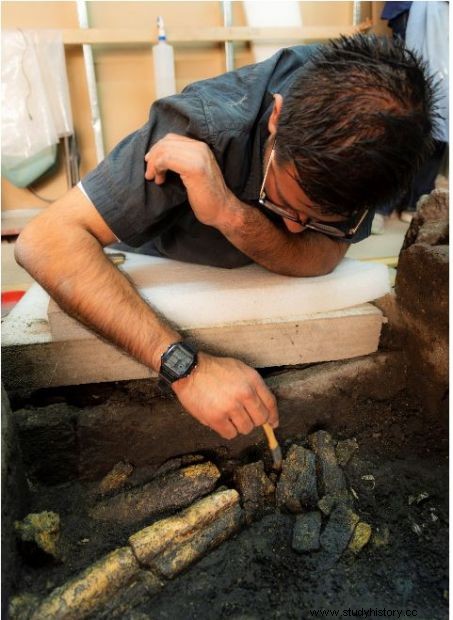
Above offering 179 and its copal bars and jaguar remains. ©Mirsa Islas / Proyecto Templo Mayor
The continuation of these painstaking excavations could take months. Each object, among the thousands of exhumed offerings, must be carefully extracted so as to also be able to determine the links between each of the elements contained in this chest, according to their orientations and associations. Among the Aztecs, materials and forms composed complex universes, and in this specific case, immolations intended to honor Huitzilopochtli. Perhaps the beginnings of the forthcoming release of a … royal burial? The suspense continues.
